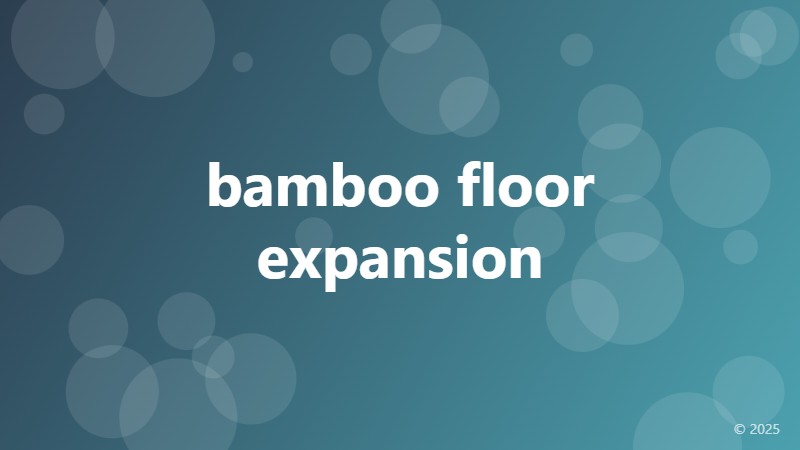bamboo floor expansion

Understanding Bamboo Floor Expansion: What You Need to Know
Bamboo flooring has become a popular choice for homeowners and builders alike, thanks to its durability, sustainability, and aesthetic appeal. However, like any other type of flooring, bamboo is not immune to expansion and contraction. In this article, we'll delve into the world of bamboo floor expansion, exploring the causes, effects, and ways to mitigate this natural phenomenon.
Causes of Bamboo Floor Expansion
Bamboo flooring, being a natural material, is sensitive to changes in temperature and humidity. When the air is humid, the bamboo planks absorb moisture, causing them to expand. Conversely, when the air is dry, the planks contract. This expansion and contraction can lead to gaps between the planks, uneven surfaces, and even buckling or warping.
Other factors that can contribute to bamboo floor expansion include:
- Inadequate acclimation of the flooring material
- Improper installation techniques
- Exposure to direct sunlight or extreme temperatures
- High levels of humidity or moisture in the room
Effects of Bamboo Floor Expansion
The effects of bamboo floor expansion can be far-reaching and detrimental to the overall appearance and functionality of your flooring. Some common issues that can arise from expansion include:
- Gaps between planks, which can trap dust and dirt
- Uneven surfaces, which can cause tripping hazards
- Buckling or warping, which can lead to costly repairs
- Reduced lifespan of the flooring material
Mitigating Bamboo Floor Expansion
While bamboo floor expansion is an inevitable natural process, there are steps you can take to minimize its effects:
- Acclimate the flooring material to the installation site for at least 48 hours
- Install the flooring according to the manufacturer's instructions
- Use a moisture barrier to protect the flooring from humidity
- Maintain a consistent temperature and humidity level in the room
- Regularly inspect and maintain the flooring to catch any potential issues early
By understanding the causes and effects of bamboo floor expansion, and taking proactive steps to mitigate its impact, you can enjoy a beautiful, durable, and long-lasting bamboo floor for years to come.